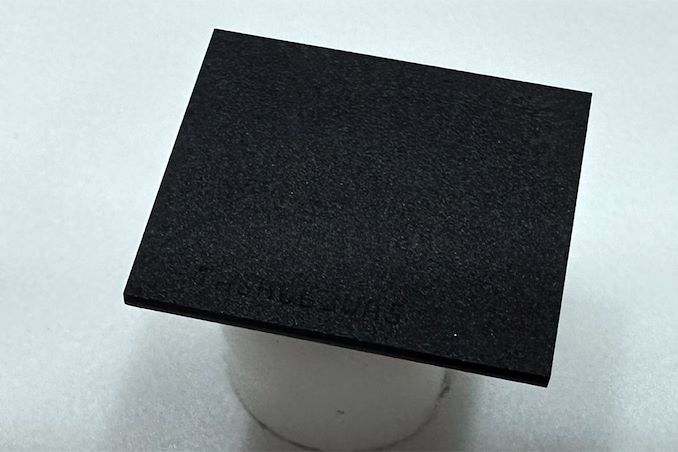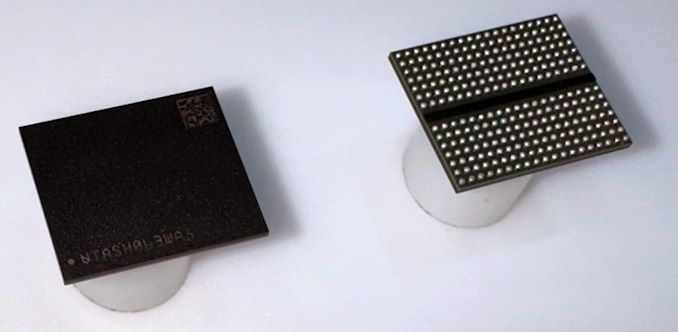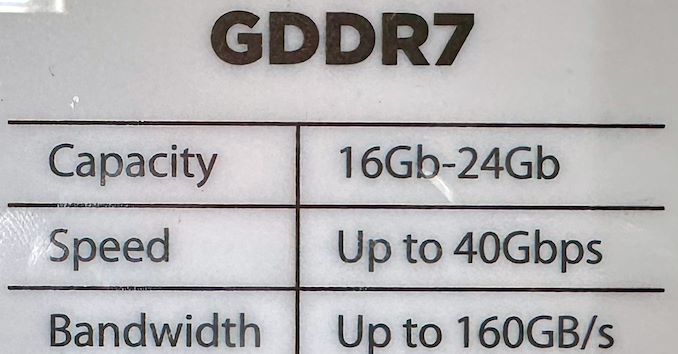SK hynix: GDDR7 Mass Production To Start in Q4'2024
by Anton Shilov on June 11, 2024 8:00 AM EST- Posted in
- GPUs
- Memory
- Trade Shows
- SK Hynix
- GDDR7
- Computex 2024

Update 06/13: SK hynix has sent a note to AnandTech clarifying that the company "plans to start mass production of GDDR7 in the fourth quarter of this year when the relevant market opens up." This article has been updated accordingly.
Being a major JEDEC memory standard, GDDR7 is slated to be produced by all three of the Big Three memory manufacturers. But it seems that not all three vendors will be kicking off mass production at the same time.
SK hynix was at this year's Computex trade show, showing off their full lineup of memory technologies – including, of course, GDDR7. SK hynix is the last of the major memory vendor's we've seen promoting their memory, and fittingly, they seem to be the last in terms of their mass production schedule. According to company representatives, the firm will kick off mass production of their GDDR7 chips in the last quarter of 2024.
Comparatively, the company's cross-town rival, Samsung, is already sampling memory with the goal of getting it out the door in 2024. And Micron has been rather gung ho about not only starting mass production this year, but starting it early enough that at least some of their customers will be able to ship finished products this year.
That said, it bears mentioning that with industry-standard memory technologies, mass production at one vendor does not indicate that another is late; it is just indicating that someone was first to validate with a partner and that partner plans to ship its product in 2024. And while mass production remains another 4+ months out, SK hynix does have sample chips for its partners to test right now, and the chips have been demonstrated at Computex.
As far as SK hynix's floor booth at Computex 2024 is concerned, the company had GDDR7 chips on display along with a table essentially summarizing the company's roadmap. For now, SK hynix is planning on both 16Gbit and 24Gbit chips, with data transfer rates of up to 40 GT/s. Though when SK hynix intends to launch their higher-end configurations remains to be seen. Both of the company's rivals are starting out with 16Gbit chips running at 32 GT/sec, so being the first to get a faster/larger chip out would be a feather in SK hynix's cap.












2 Comments
View All Comments
mczak - Tuesday, June 11, 2024 - link
Not sure if faster speeds would be immediately useful (the MCs of the GPUs / AI chips or whatever need to be ready for it as well), but if Hynix can ship larger chips earlier than the competition that would probably be quite a big deal. But I remain sceptical...Kevin G - Wednesday, June 12, 2024 - link
These align with various rumors of what next generation graphics cards are using and similarly rumored time tables for their refreshes. 16 Gbit GDDR7 at 28 GT/s this year and 24 Gbit GDDR7 at >32 GT/s a little over a year later.This may fair well for the various AI startups that can't source HBM due to being edged out by the larger players (nVidia, AMD, Intel etc.). A 512 bit wide interface at 32 GT/s would provide 2 TB/s of bandwidth, on par with the PCIe version of the H100 but with more memory (128 GB vs. 80 GB). A boost to 40 GT/s and 24 Gbit capacity GDDR7 parts would rival the full H100 at much, much higher memory capacity. With the trend being toward massive models, capacity matters more than raw compute and bandwidth so a smaller startup can be competitive here with enough interconnect IO to link things together to scale up.